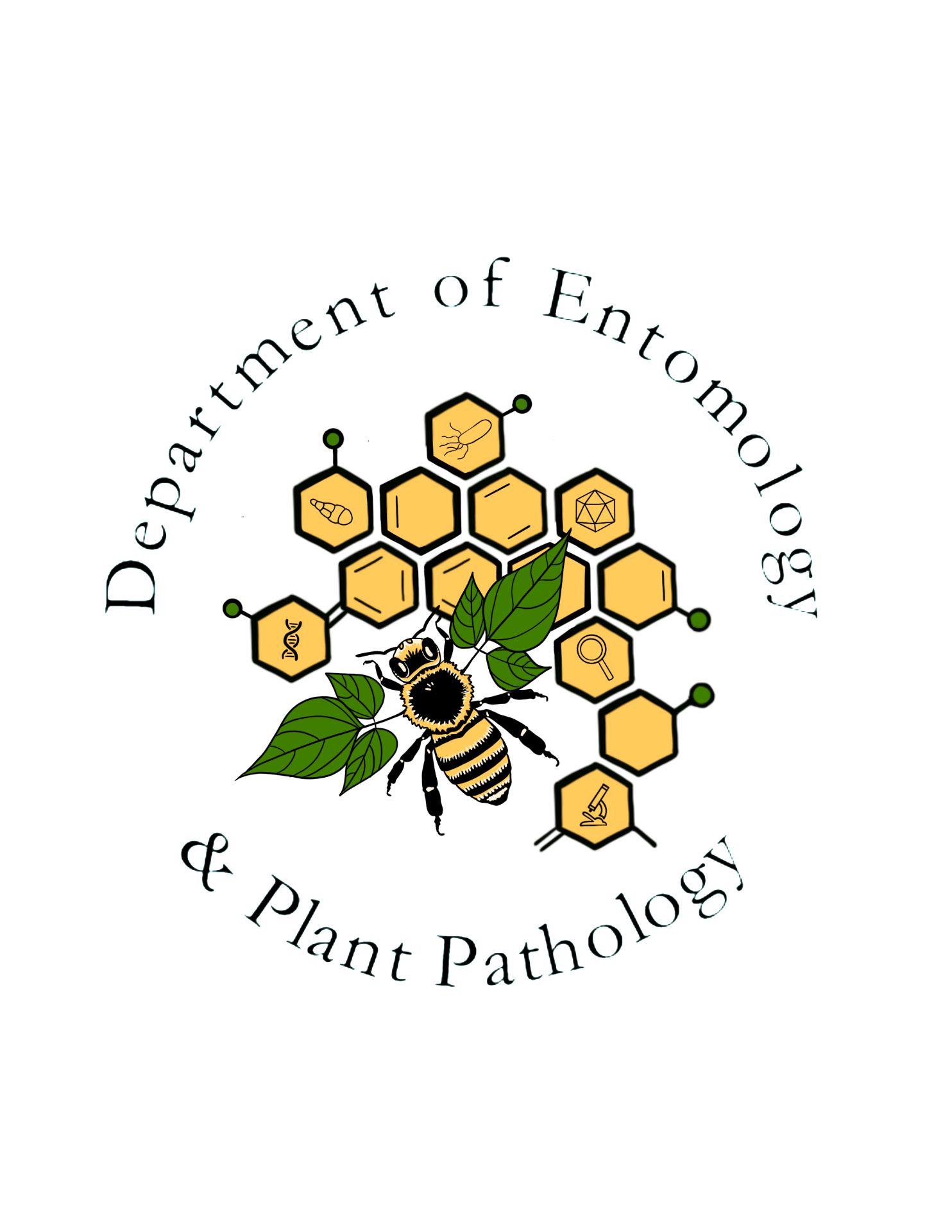Japanese Beetle
Order: Coleoptera
Family: Scarabaeidae
Genus and species: Popillia japonica Newman
Both adult and immature Japanese beetles are highly destructive pests. Adults emerge in July and August and feed on the foliage and fruit of hundreds of species of plants, often skeletonizing the leaves and gouging the fruit. They especially like American linden, apple, crabapple, Japanese and Norway maple, rose, crape myrtle, pin oak, birch, plum, apricot, cherry, and peach. The beetles are 1/3 to 5/8 inch long with a metallic green body and bronze outer wings. They have several small tufts of white hairs along the sides of the abdomen and a prominent pair of tufts near the tip. Females intermittently stop feeding to lay eggs in buried 2 to 6 inches deep in the soil.
The eggs hatch by midsummer. Larvae, which are among the many kinds of “white grubs” found in lawns and pastures, feed on the roots of grasses and other plants. Japanese beetle grubs are the most widespread turf-grass pest in the United States. They pass the winter buried in soil and complete their development in late Spring.
Japanese beetles were imported into New Jersey on the roots of nursery stock around 1916. Infestations were reported in 22 states east of the Mississippi River and in Iowa and Missouri by 1972. Isolated infestations have been found as far west as California. Japanese beetles have been present in Arkansas at least since 1997. By 2001, homeowners in northwest Arkansas were finding major damage to roses and other plants. By the summer of 2003, the beetles were found in Benton, Washington, and Pulaski Counties.

